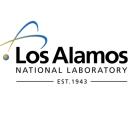
Add to my favorites
Remove from my favorites
Category: DNA alignment, Sequencing and assembly software
Subcategories: EMBL
ClustalW2 is a general purpose multiple sequence alignment program for DNA or proteins. The online version is hosted by EMBL. It produces biologically meaningful multiple sequence alignments of divergent sequences. It calculates the best match for the selected sequences, and lines them up so that the identities, similarities and differences can be seen.
...continue to read
Add to my favorites
Remove from my favorites
From SourceForge
Category: Sequencing and assembly software
AMOS is a collection of tools and class interfaces for the assembly of DNA reads. The package includes a robust infrastructure, modular assembly pipelines, and tools for overlapping, consensus generation, contigging, and assembly manipulation.
...continue to readElvira is a set of tools and procedures designed for high throughput assembly of small genomes such as viruses. The name Elvira stands for Executive for Large-scale VIRal Assembly. Elvira is particularly suitable in situations where any of the following occur: 1. Sequences must be individually trimmed against specific primers. 2. Sequences must be trimmed against degenerate primers. 3. Assemblies need to be explicitly partitioned based on sequence origin. The Elvira package includes s
...continue to read
Add to my favorites
Remove from my favorites
Long sequences assembling from SourceForge
Category: Sequencing and assembly software
Celera Assembler : scientific software for biological research. Celera Assembler is a de novo whole-genome shotgun (WGS) DNA sequence assembler. It reconstructs long sequences of genomic DNA from fragmentary data produced by whole-genome shotgun sequencing. It' a whole genome assembler originally developed at Celera Genomics for the assembly of the human genome. CeleraAssembler is now an open-source project at SourceForge. The code is actively maintained by researchers at CBCB and the Venter Ins
...continue to read
Add to my favorites
Remove from my favorites
Empowering the Development of Genomics Expertise
Category: DNA sequencing, Sequencing and assembly software
EDGE bioinformatics is intended to help truly democratize the use of Next Generation Sequencing for exploring genomes and metagenomes. Given that bioinformatic analysis is now the rate limiting factor in genomics, we developed EDGE bioinformatics with a user-friendly interface that allows scientists to perform a number of tailored analyses using many cutting-edge tools. Users can explore those and other data sets using a free demo hosted on the LANL server. Researchers who wish to analyse their
...continue to read
Add to my favorites
Remove from my favorites
From SoucrForge
Category: Sequencing and assembly software
SAMtools provide various utilities for manipulating alignments in the Sequence Alignment/Map (SAM) format, including sorting, merging, indexing and generating alignments in a per-position format.
...continue to read
Add to my favorites
Remove from my favorites
From SourceForge
Category: Sequencing and assembly software
Maq stands for Mapping and Assembly with Quality It builds assembly by mapping short reads to reference sequences. Maq is previously known as mapass2.
...continue to read
Add to my favorites
Remove from my favorites
FromaBroad Institute
Category: Sequencing and assembly software
GATK (Broad Institute) is a structured programming framework designed to enable rapid development of efficient and robust analysis tools for next-generation DNA sequencers and second it's a suite of tools for working with human medical resequencing projects such as 1000 Genomes and The Cancer Genome Atlas. The GATK s a Java-based tool intended for use on Linux (and other POSIX compatible) platforms.
...continue to read
Add to my favorites
Remove from my favorites
Short reads aligner SourceForge
Category: Sequencing and assembly software
Bowtie is an ultrafast, memory-efficient short read aligner. It aligns short DNA sequences (reads) to the human genome at a rate of over 25 million 35-bp reads per hour. Bowtie indexes the genome with a Burrows-Wheeler index to keep its memory footprint small: typically about 2.2 GB for the human genome (2.9 GB for paired-end).
...continue to readTopHat is a Linux or OS X program that aligns RNA-Seq reads to a genome in order to identify exon-exon splice junctions. It is designed to work with reads produced by the Illumina Genome Analyzer, although it was successful used with reads from other technologies. TopHat aligns RNA-Seq reads to mammalian-sized genomes using the ultra high-throughput short read aligner Bowtie, and then analyzes the mapping results to identify splice junctions between exons. It requires Bowtie, SAMtools an Python
...continue to readEdena (Exact DE Novo Assembler) is an assembler dedicated to process the millions of very short reads produced by the Illumina Genome Analyzer. Edena is based on the traditional overlap layout paradigm. All exact overlaps between any pair of reads are computed and structured in a graph (overlap step). Basically, the reads are indexed in a prefix array and overlaps are revealed by dichotomic search in the arrays. The graph is then analyzed to remove transitive and spurious edges (layout step). Fi
...continue to read
Add to my favorites
Remove from my favorites
From SouceForge
Category: Sequencing and assembly software
This is the high throughput PCR primer design software that is used at the J. Craig Venter Institute. See: Li K, et al. Novel computational methods for increasing PCR primer design effectiveness in directed sequencing. BMC Bioinformatics 2008, 9:191.
...continue to read
Add to my favorites
Remove from my favorites
From SourceForge
Category: Sequencing and assembly software
Lucy was designed and written at The Institute for Genomic Research (TIGR, now the J. Craig Venter Institute), and it has been used here for several years to clean sequence data from automated DNA sequencers prior to sequence assembly and other downstream uses. The quality trimming portion of lucy makes use of phred quality scores, such as those produced by many automated sequencers based on the Sanger sequencing method. As such, lucy’s quality trimming may not be appropriate for sequence da
...continue to read
Add to my favorites
Remove from my favorites
From SourceForge
Category: Sequencing and assembly software
BWA is a program for aligning sequencing reads against a large reference genome (e.g. human genome). It has two major components, one for read shorter than 150bp and the other for longer reads.
...continue to readThe open source SeqWare project is a portable software infrastructure designed to analyze massive genomics datasets produced by contemporary and emerging technologies, in particular Next Generation Sequencing (NGS) platforms. It consists of a comprehensive suite of infrastructure tools focused on enabling the end-to-end analysis of sequence data – from from raw base calling to analyzed variants ready for interpretation by users. SeqWare is designed to work in a 64-bit Linux environment. It can
...continue to read
Add to my favorites
Remove from my favorites
From SourceForge
Category: Sequencing and assembly software
This is a software library to run the JCVI barcode deconvolution pipeline using Sun Grid Engine, or optionally without the use of a grid.
...continue to readFusionSeq programs are written in C and constitute a tri-modular computational framework to detect fusion transcripts from paired-end RNA-sequencing.
...continue to read
Add to my favorites
Remove from my favorites
From SourceForge
Category: Sequencing and assembly software
The RDXplorer (Read Depth eXplorer) is a computational tool based on LINUX/UNIX/MAC OS X for copy number variants (CNV) detection in whole human genome sequence data using read depth (RD) coverage. It requires SAMtools and Python programming language v 2.6 or further.
...continue to read
Add to my favorites
Remove from my favorites
Froma Dana-Farber Cancer Institute
Category: Sequencing and assembly software
Next generation parallel sequencing technologies made chromatin immunoprecipitation followed by sequencing (ChIP-Seq) a popular strategy to study genome-wide protein-DNA interactions, while creating challenges for analysis algorithms. We present Model-based Analysis of ChIP-Seq (MACS) on short reads sequencers such as Genome Analyzer (Illumina / Solexa). MACS empirically models the length of the sequenced ChIP fragments, which tends to be shorter than sonication or library construction size esti
...continue to readCufflinks assembles transcripts, estimates their abundances, and tests for differential expression and regulation in RNA-Seq samples. It accepts aligned RNA-Seq reads and assembles the alignments into a parsimonious set of transcripts. Cufflinks then estimates the relative abundances of these transcripts based on how many reads support each one, taking into account biases in library preparation protocols. It runs on Intel-based computers running Linux or Mac OS X and that have GCC 4.0 or greater
...continue to readPage: 1







